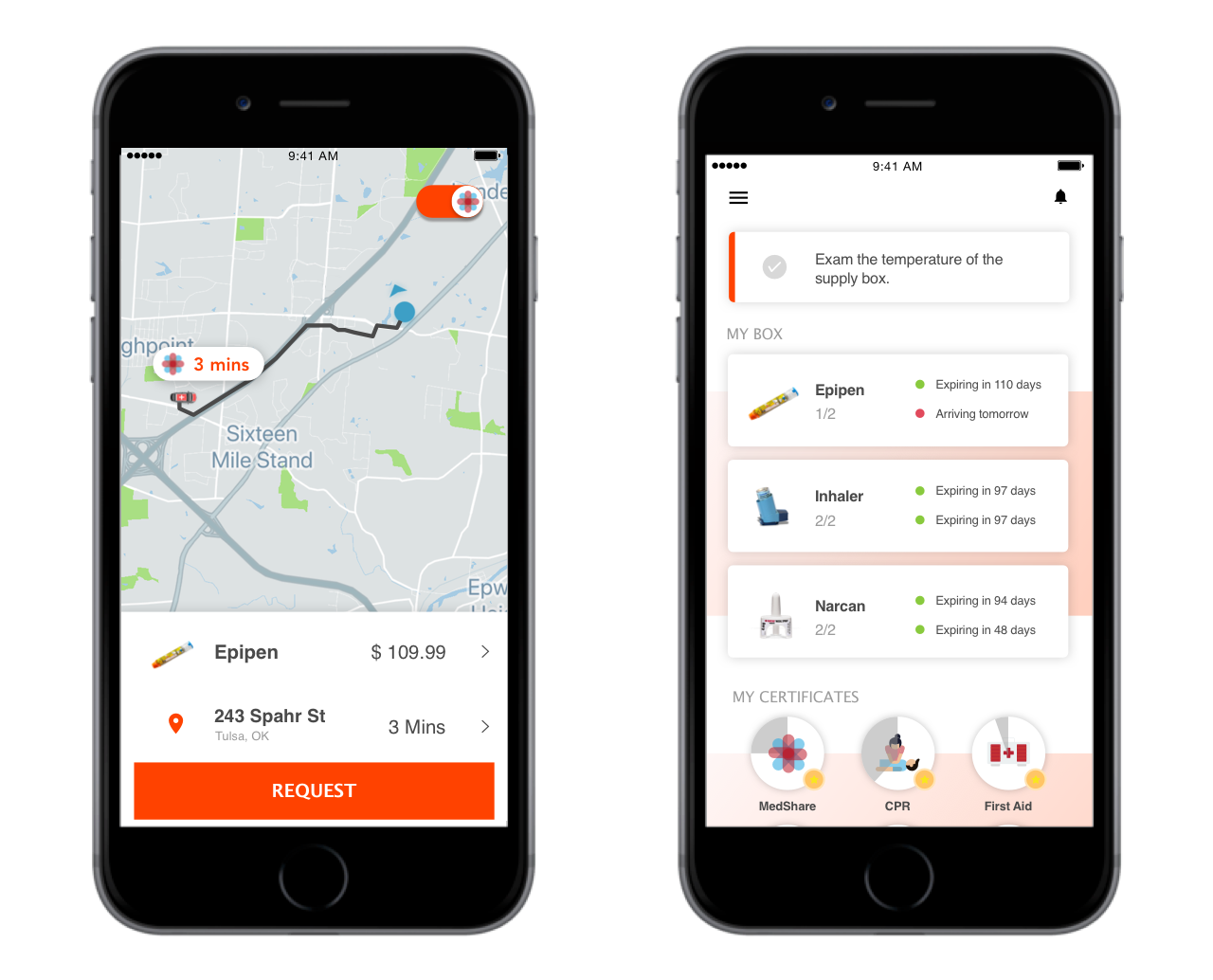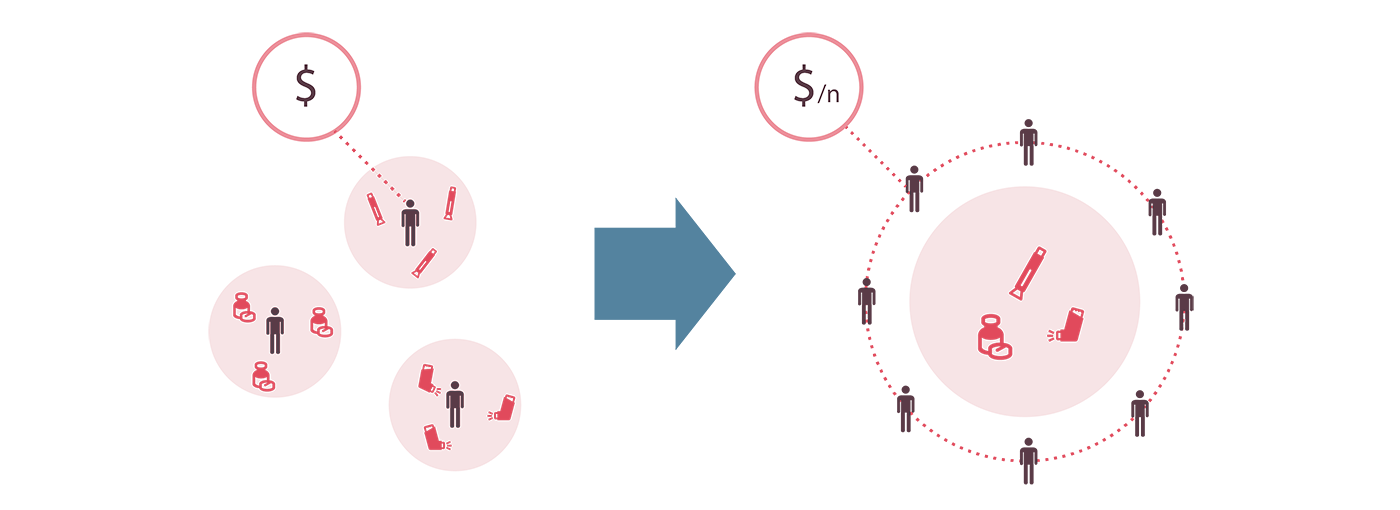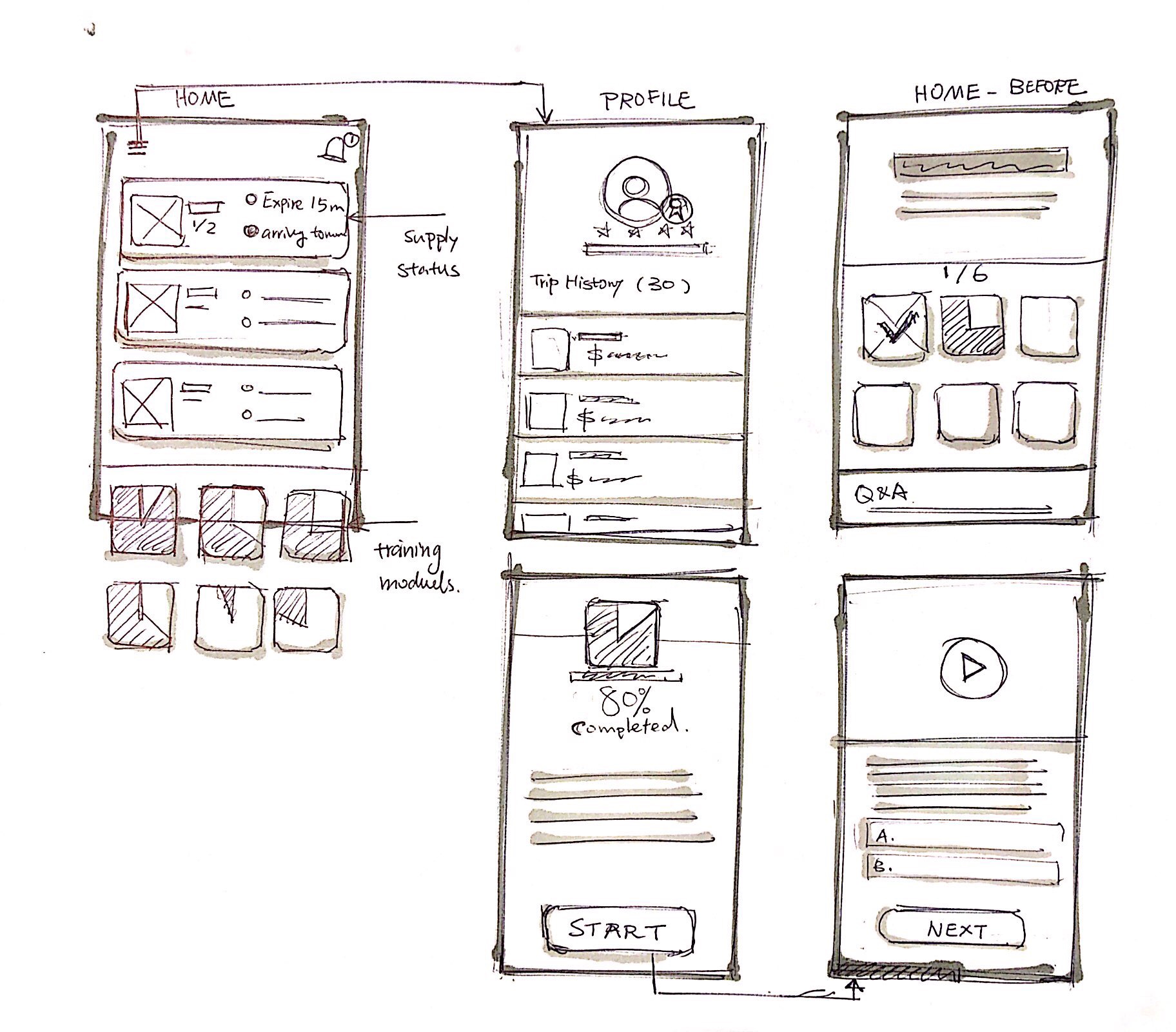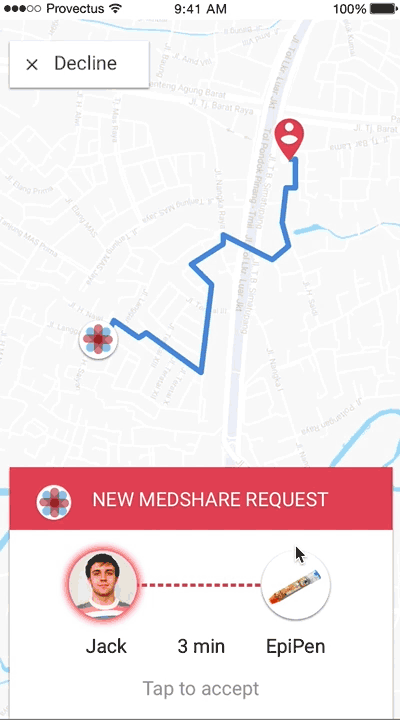

People with chronic conditions like asthma and allergy are burdened to pay for and carry around medical devices all day in case of emergency. Such devices are expensive and inconvenient to carry. However, not having immediate access to those devices can risk their lives.

We interviewed 12 people with asthma and food allergy as well as EMT (Emergency Medical Technician). Here are some interview highlights:

Synthesizing interview insights and secondary research, we identified key issues of current system:
What if instead of every patient owns a set of medical devices, the recourses are shared in a community?

Our solution is MedShare. Instead of one person buying and keeping all the medicine in case of emergency, MedShare allows people to share the medicine at the exact time when it is needed.
MedShare collaborates with Uber and Lyft. Drivers who sign up to be a helper would carry the medical devices in the car and deliver them on receiving an emergency request.


In order to test whether the user recognize the need, we presented to them a simple storyboard illustration the problem and solution. The feedback shows both positive reactions to the underlying need and some concerns.

“I can see this idea saving lots of lives. However, I would be worried about getting into legal trouble if I were the helper.
“I like the idea of always being covered. But I would have some trust issues: will the driver be on time? Is the driver trained for using and keeping those devices?
“So the goal here is that no one need to carry any medical devices, but what if people rely too much on this service and don't carry any medication even when traveling to places where the service is not provided?
We recognize legal regulations to be a major barrier to this concept. However, we believe regulation to be adaptable
to technology advancement, so the discussion about legal concern is out of scope for this project.
The challenge is to help users build a sense of trust in our service while understand the risks and take
alternative actions if needed.
We created a screen map to identify all the screens needed and prioritize the most important screens.

We had a sketching session as a group to explore designs alternatives. A mid-fidelity prototype is then made for testing.




